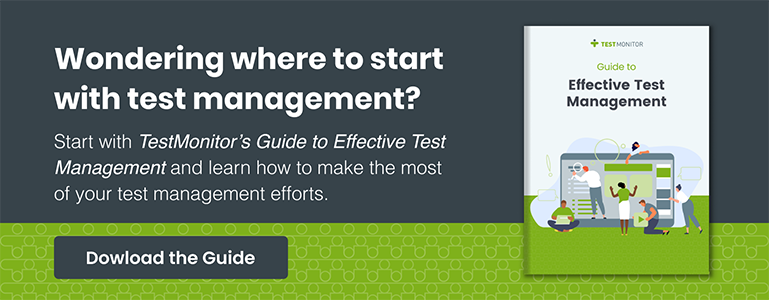3 Ways Software Test Managers Are Boosting Test Projects with ChatGPT
By now, you’ve likely heard a lot about the power, flexibility, and innovation behind OpenAI’s ChatGPT. Even if you haven’t, you’ve probably already read some of its work, viewed a portion of a website developed by it, or heard a message inspired by its output.
As you can imagine, artificial intelligence (AI) tools like ChatGPT have a wide range of applications, from pinpointing fraud among millions of bank transactions to aiding with the development of new medical treatments.
Software testers are also increasingly turning toward AI to help them with elements of each phase of the testing process, leading to more accurate, reliable, and comprehensive testing. In turn, software developers can release more thoroughly evaluated and bug-free applications.
So how can software test managers actually use the power of AI and ChatGPT to improve the effectiveness and efficiency of their software testing? Let’s dive in.
What You Need to Know About ChatGPT
ChatGPT is a machine learning model that leverages artificial intelligence and natural language processing to interact with users conversationally. In contrast to the limited range of the chatbots that have been around for more than a decade, ChatGPT has a much broader range of abilities and data from which to craft responses.
Or, in ChatGPT’s words: “Essentially, ChatGPT is a computer program that can have chat-like interactions with humans on a wide range of topics. It has been trained on vast amounts of data to recognize patterns in language and generate responses that are relevant and coherent.” For example, ChatGPT uses its knowledge base to produce everything from new song lyrics to software code.
However, ChatGPT does have its limitations:
- There have been well-publicized calculation and grammar errors within its output.
- The software doesn’t actually run the code or text it generates to validate if it successfully meets the requirements it was prompted with.
- The database from which it is based is 1-2 years old, meaning newer information cannot be woven into its responses.
The Benefits of Using ChatGPT for Software Testing
From accelerating administrative tasks to helping with identifying patterns, anomalies, and bugs in software behavior, ChatGPT and other AI tools can, if used with a proper understanding of their strengths and weaknesses, be a great aid for software testing.
Here are just a few of the applications the TestMonitor team has seen:
Automating the Initial Draft of Test Case Creation
ChatGPT can be used to help with the initial creation of test cases by helping to translate software functionality descriptions into test cases that can be validated by manual or automated testing.
Using its natural language processing, ChatGPT can turn a prompt like, “Confirm the functionality of the ‘submit’ button on a contact form” into a test case like the abbreviated example below:
With additional refinement, test managers can use these outputs to create scripts for technical or nontechnical testers.
Helping to Ensure Test Case Coverage
Using its extensive knowledge base, software test managers can also use ChatGPT to help produce lists of test cases based on best practices, such as for security, performance, and integration testing, among others.
Test managers can then compare ChatGPT’s responses to their existing lists to check for proper coverage or prompt new areas of coverage. However, ChatGPT’s support can be limited when it comes to suggesting test cases for more subjective or tailored use cases, such as interface designs for specific workflows.
Streamlining Administrative Elements
Software testing involves a lot of other preparation and work before and after the actual testing occurs. From preparing reports and evaluating test results to identifying trends and communicating with stakeholders, ChatGPT can make it easier for test managers by giving them initial findings or draft content.
Instead of just starting with a “blank page,” AI can be used to generate test data, summarize key findings, evaluate large amounts of test results for additional insights, and speed up other administrative elements of testing so more time can be spent on testing and fixing bugs.
ChatGPT: Another Software Testing Tool
While the buzz around ChatGPT is certainly exciting, we still have much to understand about its potential—and its limitations and capabilities.
Software test managers shouldn’t be afraid to take advantage of ChatGPT’s strengths, but they should be aware of its limitations, too. Ultimately, the TestMonitor team believes that AI tools like ChatGPT should be viewed as additional resources QA managers can use to improve the overall quality of their work and speed up otherwise tedious tasks—but with proper supervision.
Want to learn even more about how your team can elevate its software testing game? Then take a moment to download our resource, The Ultimate Guide to Effective Test Management.







